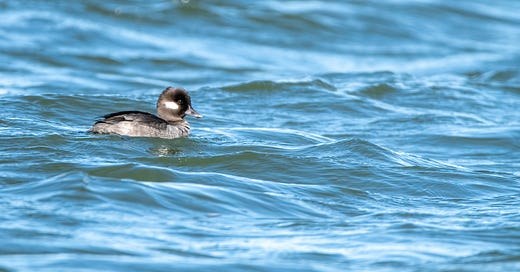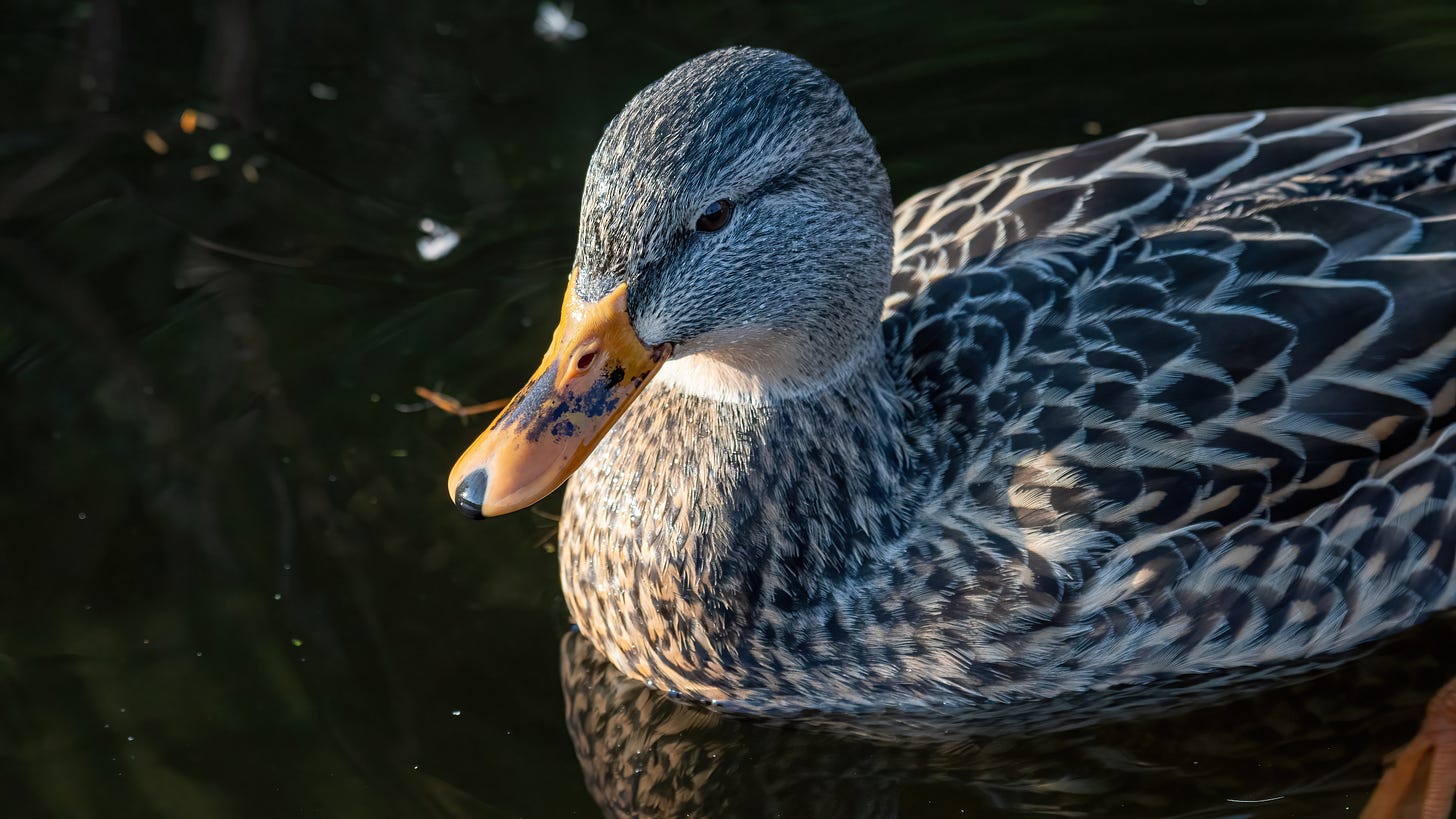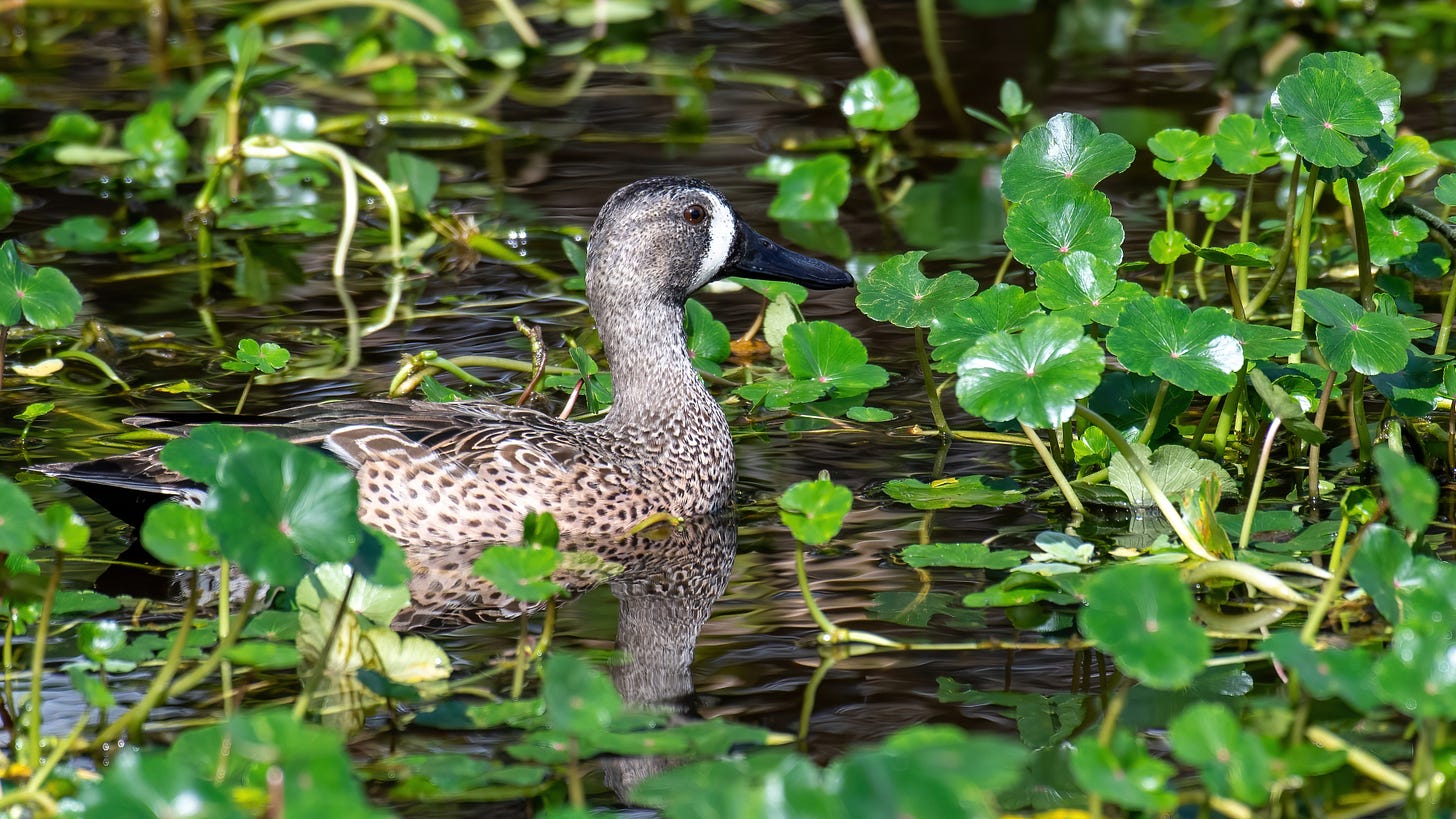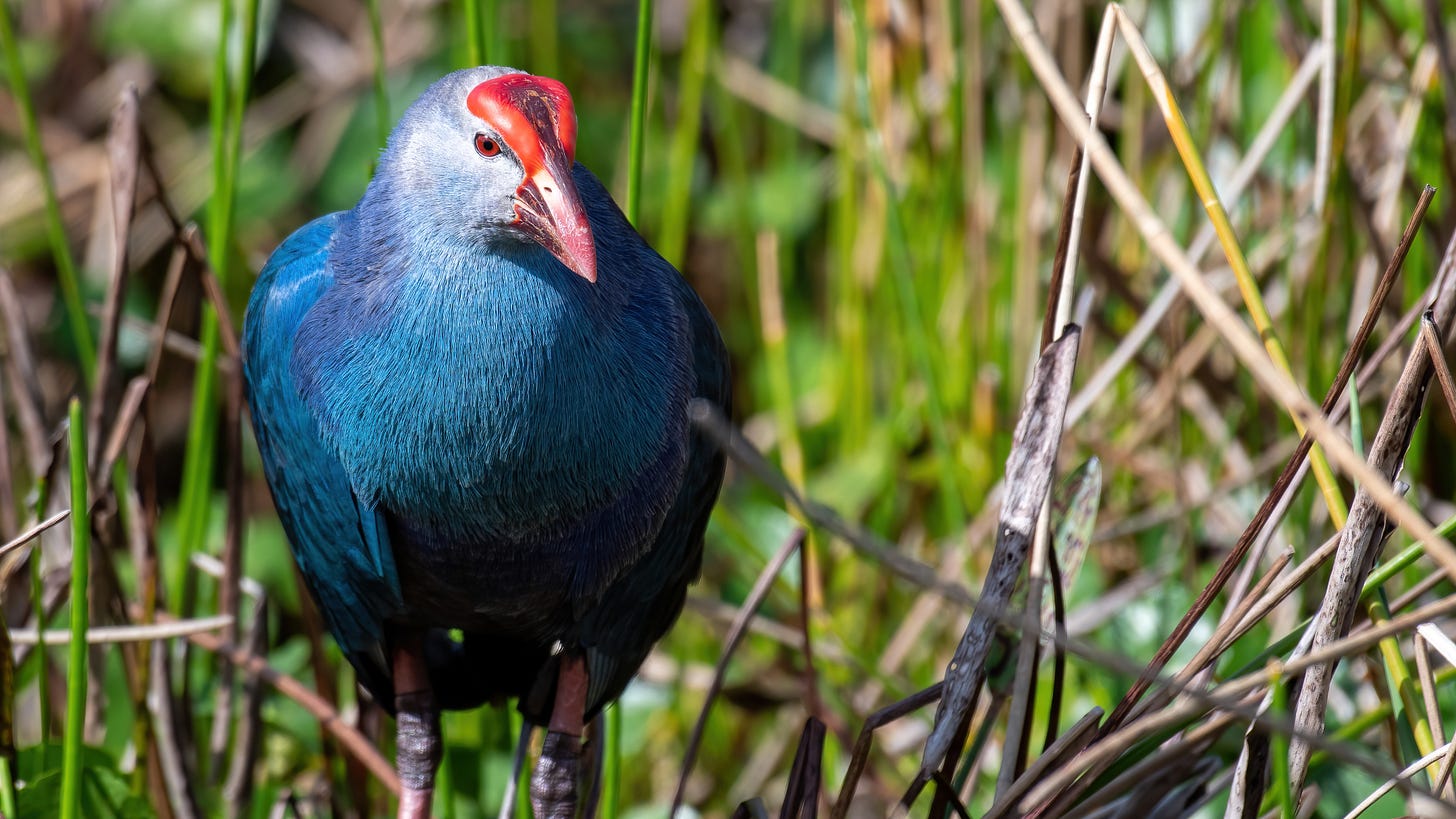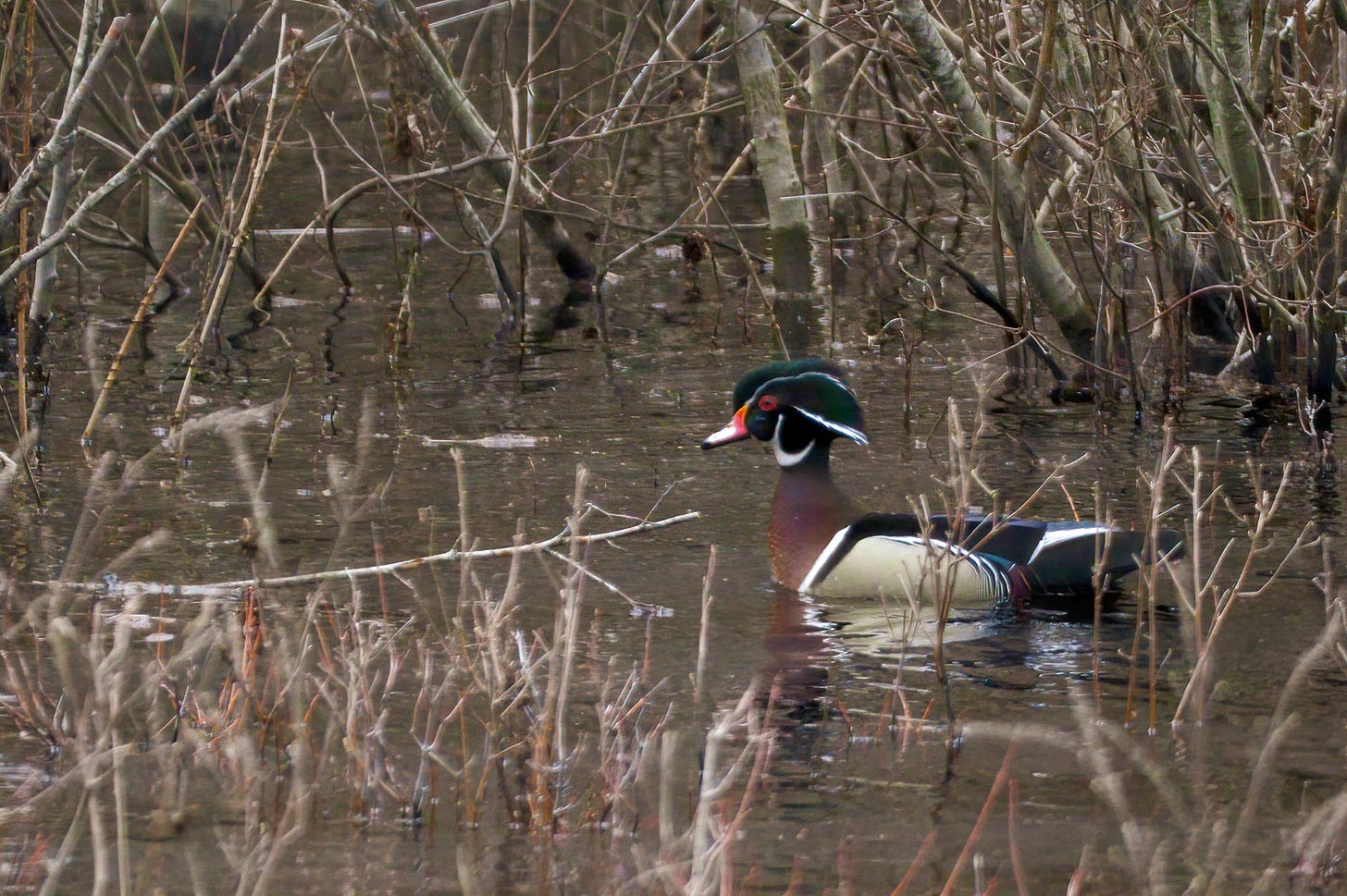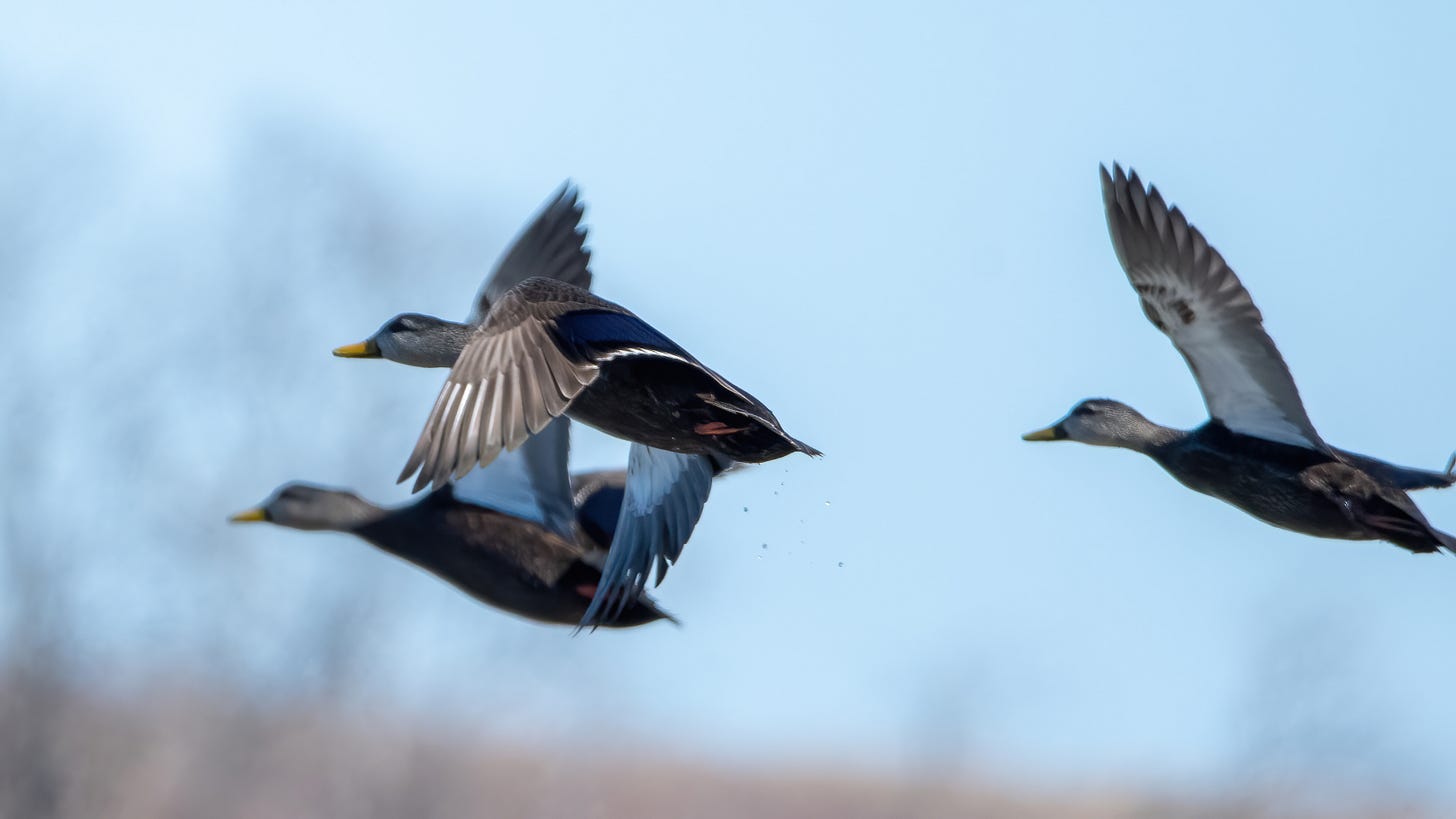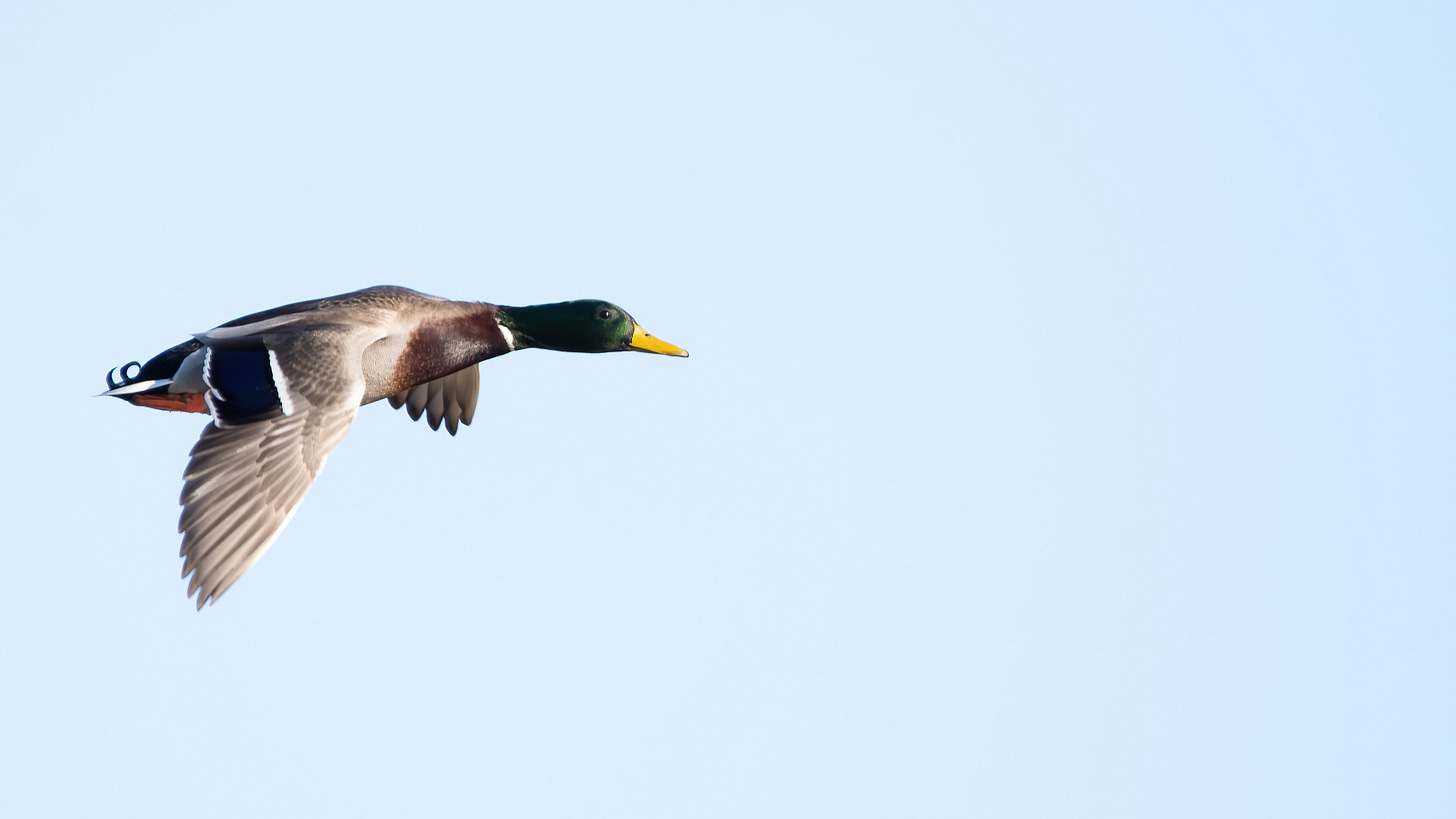Winter is for waterfowl
When the warblers and some raptors migrate away, turn your attention to ducks.
To the average person, a duck is a duck. That word, to them, is basically synonymous with Mallard—and by no fault of their own. Mallards are widespread and abundant, not that wary of humans. That, and ducks can be tough to learn. To most people they aren’t that exciting.
Raptors aren’t easy to learn either, but are exciting. They’re not a chore to go on the lookout for. At least sometimes you might see them going after prey or flying quickly, doing anything that wows an audience. Ducks mill about ponds, rivers and coastlines—manmade wetlands, even—with what scans as modesty. They can wow an audience too, if that audience knows what to look for.
Knowing birds other than ducks also has a certain allure that knowing ducks just doesn’t really have. Pointing to a cruising raptor and being able to definitively say the species name—telling a Cooper’s from a Sharp-shinned Hawk—or being able to correct somebody when they misidentify a Wilson’s Warbler as a Yellow Warbler, just carries a level of repute that being able to differentiate between an American Black Duck and a female Mallard doesn’t. At least not to certain audiences. Among birders, waterfowl fluency is immensely admirable, something that comes in handy, especially in fall and wintertime. I’m dramatically pro-duck, heavily in favor of knowing one from the other.
All of that is not to say there are not rewards or excitement to be had by learning your duck species. It’s a bit more accessible to see and identify a Common Goldeneye than it is to see and identify an American Kestrel. It just takes time. You have to want to learn. Luckily, ducks show up in droves in wintertime, so when you’re not out looking for them you can be cozied up with a field guide, gaining waterfowl fluency.
Part of the reason people don’t know ducks is because they all can look alike, particularly females. The drakes have to be a bit more striking to court mates, which makes them easier to identify.
To the untrained eye, even to the “trained” eye, a Gadwall might be a female Mallard, a Wigeon, a Green-winged Teal. There are standout ducks: Harlequin Ducks, Wood Ducks, Long-tailed Ducks, but chances are, you’re having run-ins with Mallards.
Wintertime is a good time to learn ducks in general, but when you’re out looking for them, you’ll probably brush shoulders with plenty of Buffleheads. They are adorable little ducks. “A plump, delightful, little bird,” as described in Sketches of New England Birds, “disappearing in a smooth dive and then reappearing some distance away, bobbing to the surface like a little black-and-white cork.” It’s hard not to develop a soft spot for them.
They dive a lot, can stay submerged for over ten seconds, so don’t be surprised if you turn your head for a moment and they’re gone when you look back.
Males have large white spots on their heads and big white bands on their wings. Females and immature males have smaller white spots on their cheeks. A female’s wing is largely black, with just a little splotch of white. They’re diminutive ducks, but their heads are large—and the large white patch on the mature males is harder to miss. Be prepared to see them if you go out looking for winter waterfowl—they’re common, but always a treat.
So, Mallards are ubiquitous, and once the mercury starts dropping so are Buffleheads. At least in these parts. What else might you see, then? What else should you be ready to identify?
There is no shortage of ducks. Just to see, let me try naming all the waterfowl species I can think of—broadening my search from just specifically ducks—species I know of or have encountered:
Ring-necked Duck. My favorite, as I’ve written about before.
Lesser Scaup
Greater Scaup

I’ll call this a Greater Scaup, but I go back and forth basically every time I look at this picture. Scaups are hard to tell apart. I am far from an expert. A good cue is the head shape—Greater Scaups have a rounded head, Lesser Scaups have an egg-shaped head with a peak in the back—but even that difference is discreet. Tufted Duck
Long-tailed Duck—“an abundant winter duck of the New England coast, whose active, perky behavior,” again, per Sketches of New England Birds, “elicits anthropomorphic adjectives like ‘cheery,’ ‘lively,’ ‘restless,’ or ‘happy and gay.’”
Northern Pintail. So comely, I keep a carved wooden decoy of one out on the mantel as decoration. I have photos of them, but none I consider that great—mostly far-off ducks in a salt panne.
Green-winged Teal
Blue-winged Teal. I have a lot of pictures of these—and Black-bellied Whistling Ducks, and plenty of other waterfowl and wading birds—from a January day at the Wakodahatchee, Loxahatchee, and Green Cay Wetlands, but they are not found in just Florida. Yes, Florida feels anathema to the title “Winter is for waterfowl,” so much so that I was at first resistant to include any pictures from the trip there, but waterfowl are waterfowl.
Northern Shoveler. Extremely distinct ducks with massive shovel-like bills.
Red-breasted Merganser
Common Merganser
Hooded Merganser
Atlantic Brant. Nothing like waking up to a text that a friend saw a ton Atlantic Brants at a specific oceanside park, and that we could each bring our cameras to get cool pictures of them. We’ve got some months left. I need more pictures of brants, don’t have any good ones (hence this being between pictures of Hooded Mergansers and Canada Geese).
Canada Goose. Prepare for goose-by-goose digressions. These geese are common in most places, yes. Watching Canada Geese provided solace for me on lunch break walks, still within earshot of the highway, where I procrastinated going back to a job I hated. The one I’d often go fishing on the way home from. I thought often—especially after having few small talk topics—of Aldo Leopold’s quote from A Sand County Almanac: “For us in the minority, the opportunity to see geese is more important than television.” I still think of that quote often. Geese feel too easy to not take adequate notice of, too easy to disregard.
Snow Goose. If you see one, the name will make sense.
Ross’s Goose. Tiny goose, but beautiful. Might be mixed in with snow geese, which can present a challenge, as they look alike.
Pink-footed Goose. Described in Merlin as a “rare but increasing winter visitor to northeastern North America, almost always with flocks of Canada Geese.” This is true. One was mixed in with a bunch of Canada Geese one recent winter at Joppa Flats, a spot frequented by geese and birders—also a good place to chase striped bass.
Greater White-fronted Goose. Never seen one—or if I did, I didn’t realize—but want to badly. As is the case with most of the rarer geese for me.
Barnacle Goose. Fantastic name for a bird. Also, a very striking goose—two words that don’t readily accompany each other: “striking” and “goose.” That said, there are a greater number of striking geese than one might realize. Two words that do readily pair well: “barnacle” and “goose.” I have never seen one, but hope you are lucky enough to have a sighting.
Common Eider. The biggest duck on the continent, a sea duck.
King Eider. A bit smaller than the Common Eider, don’t let the names misguide you. I saw one yesterday morning, friendlily pointed out by other birders, mixed in with a group of Common Eiders.
Redhead Duck
Gadwall
Surf Scoter
White-winged Scoter
Barrow’s Goldeneye. Very easy to confuse with a Common Goldeneye—though I saw a Barrow’s one time and was excited for days, kept confirming that it was what I saw. I was in Massachusetts. They’re much more common in the Pacific Northwest—Alaska, British Columbia, Washington. Some things to look for: The white mark behind the bill on a male Common Goldeneye is round, a circle. On a Barrow’s, it looks like a teardrop. A Common Goldeneye’s head is rounder, the head behind the bill of a Barrow’s rises more steeply. Despite that, they look very similar.
Common Goldeneye
Black Scoter
Horned Grebe
Eared Grebe
Western Grebe
Red-necked Grebe
Pie-billed Grebe
Mallard
Canvasback
Ruddy Duck
Muscovy Duck
Harlequin Duck. Seen by many as “our most spectacular and elegant waterfowl”— again to reference Sketches of New England Birds. Not a waterfowl-specific book, but one of my favorite books for when I want to read about waterfowl.
Wood Duck. Famously handsome. “Arguably the most beautiful of all North American ducks,” says the same book, and I have a hard time disagreeing. So much so that I have a tee shirt with a Wood Duck on it—and a Harlequin, Redhead, Ruddy, some others. I just like ducks, I guess.
Common Loon. A woodcarving I’ve had of one since I was eight years old was welcome company brought to me during my months of hospitalization. Now I keep it next to my Pintail. My memory wasn’t working great at the time, but I managed to make a fuzzy one: I vaguely recall semi-cognizantly taking it upon myself to tell a nurse, after she complimented the carving in passing—probably just trying to go about her business—how that carving was a loon, not a duck, that a loon is beautiful, and so aren’t ducks, but loons are still not ducks. I’m glad my brain still knew the difference.
Red-throated Loon
Black-bellied Whistling Duck. Not a “winter waterfowl,” because they’re more common in warmer climes—Central and South America—but I’ve seen them, they’re comely, so I’ll include them. These are very pretty ducks, with long legs and necks, pink bills and largely umber bodies, big white patches on the wings in flight. They are not that uncommon in some of the southern states—Texas, Louisiana, Florida. You just won’t likely see them in New England. In New England, be prepared to see Buffleheads with a backdrop of snow, swimming in the open water around ice. You also might see a Pintail, a Hooded Merganser—a King or Common Eider if you’re by the sea.
Mottled duck. Mostly around the Gulf of Mexico. Looks a lot like a female Mallard or an American Black Duck—so much so that “hybridization, especially with Mallards, poses a real threat to the Mottled Duck’s future.”
American Black Duck. Good luck telling these from Mallards, particularly females. Mottled ducks too, if you have them in your area. Don’t forger Gadwalls. A Gadwall’s bill is darker, and you won’t see any flashes of purple when a Gadwall flies away. Regardless, this one has a lot of lookalikes. The American Black Duck has “a profile nearly identical to Mallards,” per the Cornell Lab of Ornithology. Mallards aren’t as dark brown, and their bills are orange, not yellow. You’ll see purple on both of these birds’ secondary feathers in flight. The official term is their “speculums.” On Mallards, that purple is bordered in white; on Black Ducks, it is bordered in black.
American Wigeon
Eurasian Wigeon
American Coot. A bird found “just about anywhere there is a bit of water,” writes Joan E. Strassman in Slow Birding, in her chapter devoted to this species. She asserts that American Coots are a bird “you can easily learn, for no others have white beaks and plump black bodies.”
Mute Swan. I am not a huge fan of swans—and not just Mute Swans. I saw some Trumpeter Swans in Montana, but Mute Swans have sullied all swans for me. They feel like low-hanging fruit to get excited about because they are so clearly elegant birds. Yes, swans are pretty—but have you heard of or seen a Gadwall? A Blue-winged Teal? A Northern Pintail, a Ring-necked or a Wood Duck? Still, sometimes Mute Swans pose nicely for photos—and they usually aren’t afraid to let you get close—so I put my feelings toward them on the back burner if I’m out taking pictures. Like or dislike, they’re good-looking birds.
See? More than just Mallards—and that’s just the waterfowl I could think of off the top of my head. I say waterfowl because geese, brants, loons, swans, coots, and grebes technically aren’t ducks.
I’ve always been interested in birds, but it was embarrassingly later in life that I realized how rich and intricate the world of waterfowl can be.
Part of the allure of knowing waterfowl is it feels like you’re in on a secret: Yes, most people just think of Mallards or Canada Geese and they’re done, but there is so much more to know! So many gorgeous birds!
Ducks are a wellspring of knowledge and identification opportunities hiding in plain sight. As with the Greater and Lesser Scaups, with Tufted and Ring-necked Ducks, with female Mallards and American Black Ducks, there is always more to learn, little differences to brush up on regarding head shape, bills, plumage, the like. There are experts on ducks, but it takes quite a lot to get there—and even experts aren’t impervious to getting stumped.
Ducks also feel like an invitation to slow down; a welcome reprieve from thumbing through warbler field guides and gawking at a group of lookalikes. That is not to say that you can’t thumb just as feverishly and gawk at a waterfowl guide. Still, going out in pursuit of ducks can be a welcome break from pounding the pavement in pursuit of eagles, falcons, hawks, or Ospreys.
They can feel like a good way to get to know a place. A Mallard is commonplace to us, so what duck is the Mallard of somewhere else—something commonplace and familiar? They can also be an invitation to get to know a place you already frequent.
You might watch the seasons turn, start looking for winter birds in a place you usually frequent in short sleeves. A particular place comes to mind for me. In winter, there isn’t an Osprey in sight, the Tree Swallows have left. Instead, I take account of Buffleheads, of different scoters.
I ask: What does a duck find alluring or tempting about this place? I read up on their preferences, see how the habitat meets what they’re looking for. I look around, notice different things, answer my own question. Without as many birds to look at, it’s easier to look around and truly appreciate where you are—to see how you and the birds you look for fit into a place. Birding is a thing you can do in all four seasons, and each season offers something different.
A female Bufflehead was swimming repeatedly close to another birder and I—seemingly unfazed—at one of my favorite birding spots. I had a great encounter with a Short-eared Owl there, but that memory isn’t as crisp as that Bufflehead. “I’ve just been standing here, watching her,” the birder said. Moments like that are special. It’s been years, but it still stands out to me.
Winter brings with it those waterfowl. Those waterfowl bring with them those moments.


